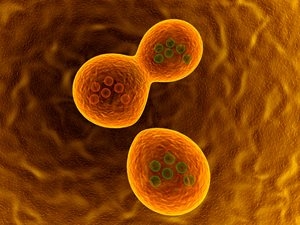In 1996 S. cerevisiae became the first eukaryotic genome to be fully sequenced enabling the creation of the first molecular-barcoded, genome-wide yeast knockout collection (1, 2). The collection includes over 20,000 deletion strains corresponding to 5,916 genes (including 1,159 essential genes).
Each strain has a complete start-codon to stop-codon deletion of an open reading frame (ORF) that is flanked by two molecular barcodes. This collection has been used successfully in a number of screens and has been cited over 590 times (3).
Advantages of the collection include:
- Molecular barcodes allow high throughput parallel screening of entire genome
- Complete deletions that ensure no residual gene function
- Homozygous and heterozygous formats ready for screening
- Haploid collections can be crossed to cell based assay strains to expand screening options
References
1. Quantitative phenotypic analysis of yeast deletion mutants using a highly parallel molecular bar-coding strategy. Nat Genet. 1996 Dec;14(4):450-6.
2. Http://www-sequence.stanford.edu/group/yeast_deletion_project/consortium.html
3. Google Scholar
Yeast Knockout (YKO) Collection
Deletion Strain Creation
The Yeast Knockout (YKO) Collection was created by systematically targeting every open reading frame (ORF) and creating a start- to stop-codon deletion. The cassette used to delete the ORF consists of a selectable marker (kanamycin-resistance KanMX4) flanked by two barcode sequences. These are referred to as the UPTAG and DOWNTAG and are unique to each gene. The 5' and 3' sequences of the cassette is homologous to the targeted gene to allow recombination. Following recombination, the selection marker replaces the ORF and the barcodes are integrated into the genome.
Bart Scherens and Andre Goffeau (2004) The uses of genome-wide yeast mutant collections.
Genome Biology 2004,
5:229.
High Throughput Parallel Screening
The UPTAG and DOWNTAG barcodes (see figure above) allow high throughput parallel screening. Starting with a population where each deletion strain is represented equally selection pressure can be applied. Strains resistant to the selection become more highly represented than sensitive strains during growth of the culture. The changes in population correlate with changes in the barcode representation and can be analyzed by microarray or next generation sequencing.
The selection pressure is determined by the type of screen. One of the initial validations of the collection highlights its utility and flexibility by performing a number of screens using selection for growth in high salinity, low salinity, high pH, changes in carbon source and peroxide stress (1). There have been a number of screens since including but not limited to examining exposure to ionizing radiation, DNA damaging reagents and defects in cell division (Reviewed in 2).
References
1. Giaever G, Chu AM, Ni L, Connelly C, Riles L, Veronneau S, Dow S, Lucau-Danila A, Anderson K, Andre B, et al.: Functional profiling of the Saccharomyces cerevisiae genome. Nature 2002, 418:387-391.
2. Bart Scherens and Andre Goffeau: The uses of genome-wide yeast mutant collections. Genome Biology 2004, 5:229
 IDT
IDT
